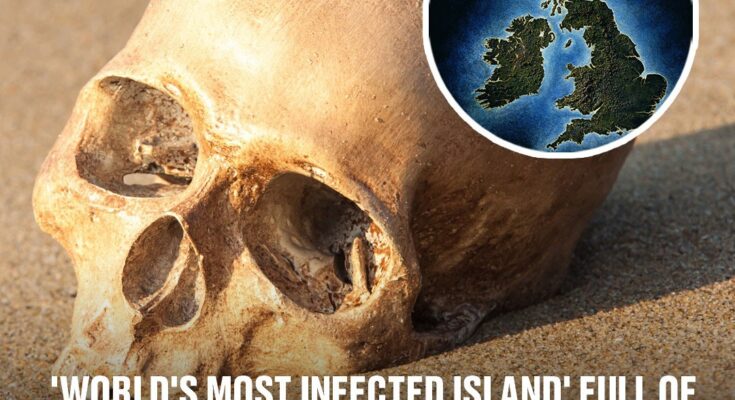
The ‘World’s Most Infected Island’ Is Loaded With Human Skeletons and Is Only a Mile Off The UK Coast
Not many people, even those living in the UK, are aware that their country is home to one of the most eerie and macabre places on earth. Located less than a mile off the coast of Kent, Dead Man’s Island is often referred to as the ‘world’s most infected island.’ This sinister title stems from its dark and disturbing past. What was once a forgotten corner of the Swale Estuary near Queenborough has become notorious after the chilling discovery of human remains scattered across its surface.
A Chilling Discovery: The Origin of Dead Man’s Island

The name Dead Man’s Island isn’t just for dramatic effect—it has historical roots that are as grim as they sound. In 2016, the remains of more than 200 human bodies were unearthed on the island, revealing a grim chapter of the past. These remains are believed to be those of convicts who perished aboard prison hulks. These hulks were decommissioned ships repurposed to house prisoners in the 18th and 19th centuries. Overcrowded and plagued by disease, these floating prisons offered dire conditions that led to many deaths. When these unfortunate souls passed away, their bodies were unceremoniously buried in unmarked graves on the island, only to be uncovered by erosion and tidal movements centuries later, according to LADBible.
Life and Death on the Prison Hulks

Prison hulks were a nightmare for those who were forced to live on them. Overcrowding, poor sanitation, and rampant disease were common, making the hulks a breeding ground for death. It is little wonder that so many inmates succumbed to illness. “The conditions on these hulks were seriously rough,” remarked a historian familiar with the island’s past. “It wasn’t just the overcrowding; diseases spread rapidly, and there was little to no medical care available.” The bodies of those who didn’t survive were transported to places like Dead Man’s Island and buried in shallow, unmarked graves. Over time, these graves were forgotten, and nature took its course, slowly revealing the skeletal remains once hidden beneath the soil.
The Unveiling of the Past: Erosion and Exposure

Years of erosion and tidal shifts have gradually unearthed the island’s grim contents. Bones, skulls, and other remains now lie exposed on the muddy surface, serving as a stark reminder of the island’s haunting history. In recent years, even more remains have been found, drawing both curiosity and concern from the public and authorities alike. The island, owned by Natural England, is technically off-limits to the public, but that hasn’t stopped people from exploring it. The unearthing of these graves has transformed Dead Man’s Island from a forgotten piece of history into a chilling site of macabre interest, attracting both researchers and thrill-seekers.
A Frightening Expedition: First-Hand Accounts

YouTuber Dara Tah is one of the few who has dared to venture to Dead Man’s Island and document his experience. His video, which has captivated many, offers a chilling look at what it’s like to spend the night on an island full of human skeletons. “I found out about an area on the island called Coffin Bay,” Tah explains. “It’s almost always submerged underwater, but during this time of year, there’s a small window to find it and search it.” During his visit, Tah uncovered not only ancient bones and 500-year-old coffins but also old bottles and other historical artifacts that have washed up over time. His footage serves as a haunting reminder of the island’s past, capturing the eerie silence and the sense of foreboding that hangs in the air.
A Place of Death and Life: The Island’s Dual Identity

Despite its morbid history, Dead Man’s Island is not just a graveyard; it is also recognized as a Site of Special Scientific Interest (SSSI). The island’s marshlands provide a vital nesting and breeding ground for various bird species, making it an important site for conservation. This dual identity—a place of both death and life—adds to the mystique of Dead Man’s Island. While the exposed bones and skeletal remains tell the story of the island’s dark past, the thriving bird populations offer a glimpse into its vibrant present. It’s a place where history and nature collide, where the echoes of the past mingle with the calls of the present. Dead Man’s Island remains a haunting testament to the darker chapters of human history, even as it serves as a sanctuary for wildlife.



